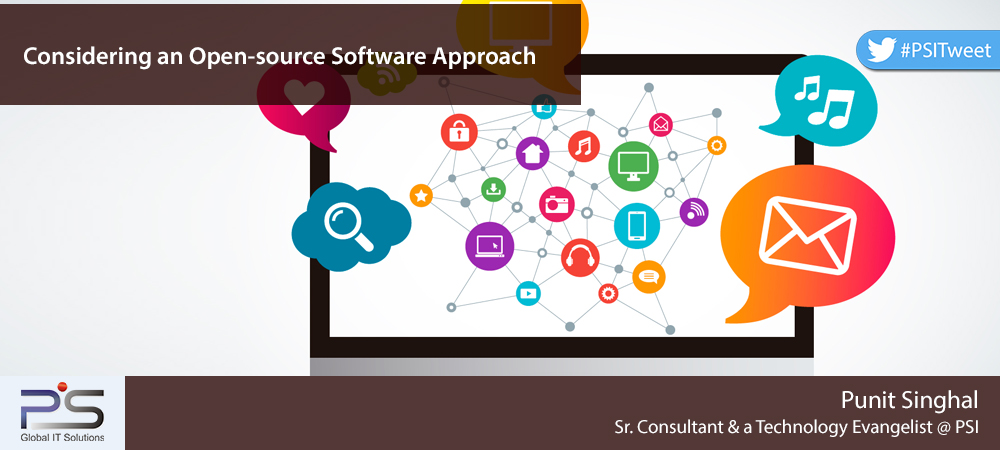The government of India’s move and policy announcement to make Open-source software mandatory for building Apps and services has indisputably brought Open-source software services in the spotlight. It claims to ‘ensure efficiency, transparency, and authenticity of service cost effectively’. The study states that about 90% of Indian businesses will be using Open-source software by 2017.
Furthermore, organisations are using Open-source software, making it the talk of the town for developers. Open-source software claims numerous benefits for businesses as compared to the proprietary software. First amongst them is indisputably the price. Open-source software is generally available at lower prices and sometimes free of cost. According to recent Gartner reports, by 2016 the majority of mainstream IT organizations will leverage nontrivial elements of open-source software in mission-critical IT solutions.
So let’s consider some other advantages of Open-source software.
The software can be examined by developers for security flaws. This constant review improves security by identifying and eliminating shortfalls in the system. The Open-source code facilitates the in-depth security review at all levels. But does this mean the closed or proprietary software is secure and foolproof? This is better known to the testers and developers of the company. The bugs in Open-source are likely to be resolved faster as the majority of developers are working to rectify them.
With openness comes the flexibility, the business users can customise the Open-source software to suit their requirements. The organisations are free from ‘vendor lock-in’ and this reduces the burden of regular licensing costs in case of proprietary software. Both the software and hardware system have to be in sync with the requirements of proprietary software, whereas no such limitations exist in Open-source software.
The Open-source software can be termed as technically superior compared to the others. The Open-source software users and developers can benefit from their counterparts working on the same frameworks and resolve the issues and concerns. The developers get support from the community forums for all aspects of the software. The Open-source software can be utilised cross platform and are not bounded by the proprietary formats.
If you believe in giving a trial or testing before actual purchase, Open-source software are available. They are worth considering and satisfy the hunger for creativity.
By Punit Singhal, Sr. Consultant & a Technology Evangelist Government of India’s move and policy announcement to make Open-source software mandatory for building Apps and services has indisputably brought Open-source software services in the spot light. It claims to ‘ensure efficiency, transparency and authenticity of service cost effectively’. Study states that about 90% of Indian businesses will be using the Open-source software by 2017.
Furthermore, organisations are using Open-source software, making it the talk of the town for developers. Open-source software claims numerous benefits for businesses as compared to the proprietary software. First amongst them is indisputably the price. Open-source software are generally available at lower prices and sometimes free of cost. According to recent Gartner reports, by 2016 the majority of mainstream IT organizations will leverage nontrivial elements of open-source software in mission-critical IT solutions.
So let’s consider some other advantages of Open-source software.
The software can be examined by developers for security flaws. This constant review improves security by identifying and eliminating shortfalls in the system. The Open-source code facilitates the in depth security review at all levels. But does this mean the closed or proprietary software are secure and fool proof? This is better known to the testers and developers of the company. The bugs in Open-source are likely to be resolved faster as majority of developers are working to rectify them.
With openness comes the flexibility, the business users can customise the Open-source software to suit their requirements. The organisations are free from ‘vendor lock-in’ and this reduces the burden of regular licensing costs in case of proprietary software. Both the software and hardware system have to be in sync with the requirements of proprietary software, whereas no such limitations exist in Open-source software.
The Open-source software can be termed as technically superior compared to the others. The Open-source software users and developers can benefit from their counterparts working on the same frameworks and resolve the issues and concerns. The developers get support from the community forums for all aspects of the software. The Open-source software can be utilised cross platform and are not bounded by the proprietary formats.
If you believe in giving a trial or testing before actual purchase, Open-source software are available. They are worth considering and satisfy the hunger for creativity.
By Punit Singhal, Sr. Consultant & a Technology Evangelist [:]









